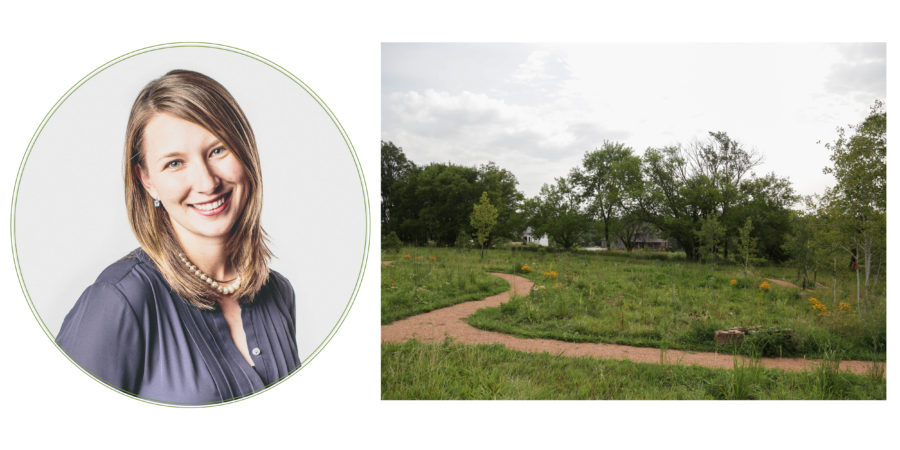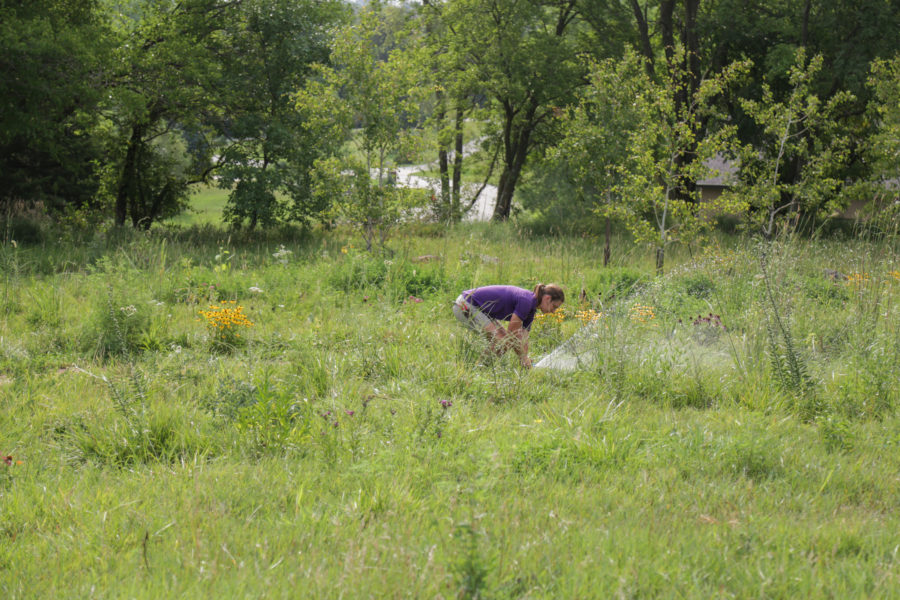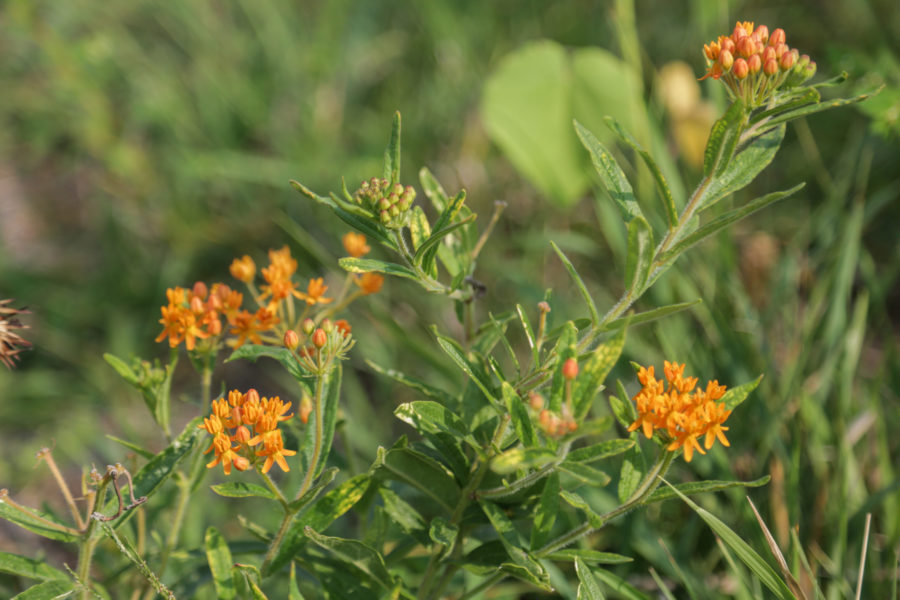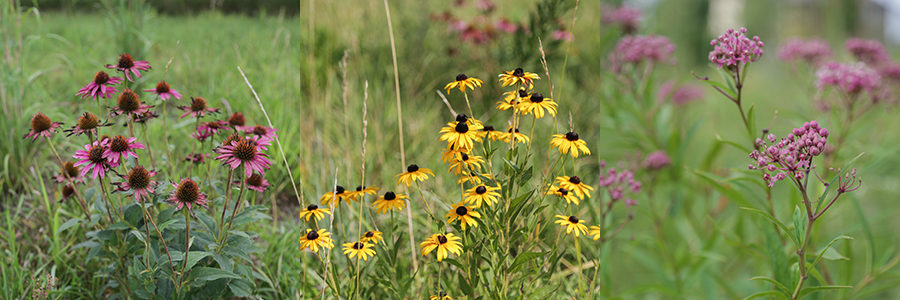
Q: Tell us more about gardening at this property.
A: In the remembrance garden, this summer after its initial installation, I have watered by hand and by sprinkler, pulled weeds and bromegrass away from the base of the new, young plants, and maintained the crushed granite pathway, raking washed-away granite into place and spraying for impeding weeds in the path. The maintenance on this garden is more intense just after installation. There is no irrigation system, so it needs to be watered by hand, sprinkler, or mother nature herself. The client has done a wonderful job keeping it wet and watering regularly. As a side note, these perennials and biennials are planted in amongst bromegrass. After this first winter and come next spring and summer, we will simply let the garden grow.
Q: What inputs have guided your gardening efforts?
A: The client loved how the vision and design came to life. As you move down the pathway, an Aspen-area felt very enclosed, as if you were hiking through the mountains in Colorado. We purposefully did not mow around the aspen trees in order to create part of the enclosure. The tall aspens on both sides of the pathway, in combination with the moss boulders and plant material, created a protected pathway, reminding the client of meaningful hikes in the Rocky Mountains. The client welcomes the butterflies and moths, which land on the butterfly milkweed. She wanted perennial seedheads left up in the winter, those that would provide food to birds and wildlife.
As far as dislikes, we do have some ground squirrels which are eating the roots of the new perennials. I’m trying to combat that with spreading the seed of those perennials, in hopes to have more of that plant next year.
The great part about this garden is that it does not need deadheading or weeding. Most of my time is spent monitoring the roots to ensure establishment. I find it fun to monitor the garden for enjoyment for both the gardener and the client. This means looking for butterflies, birds, and ground squirrels and their interactions with plants and flowers. I’ve even encountered a lizard!
Q: What is unique about gardening in this space?
A: This garden is very unique. Instead of plants being surrounded by mulch, they are surrounded by bromegrass. The established bromegrass is the ground cover (i.e. mulch, grass, perennials). These plants (perennials, shrubs, and trees) were planted into the established brome. The care in this garden will be very low, and maybe eventually nonexistent in the future. The plants used are able to compete with the root system of the bromegrass and are Nebraska perennials so they do well in our climate.
Read more from our interview with the garden designer
here. If you’re ready to create a new space to enjoy in your garden
contact us and we’ll have a designer reach out to start your design process. Need a gardener next year? We can help with that too.
3,120 Plants - 208 Flats - 40 Hours - 8 Purple Polos - 1 Day
We're gearing up for summer here at Kinghorn Gardens and that means lots of annuals flying out the door, onto trucks, and into their new...
After taking one step into this spring garden and I didn't feel like I was in Nebraska anymore, but like I had been swept far away, to the Netherlands perhaps. While tulips didn't originate in...



